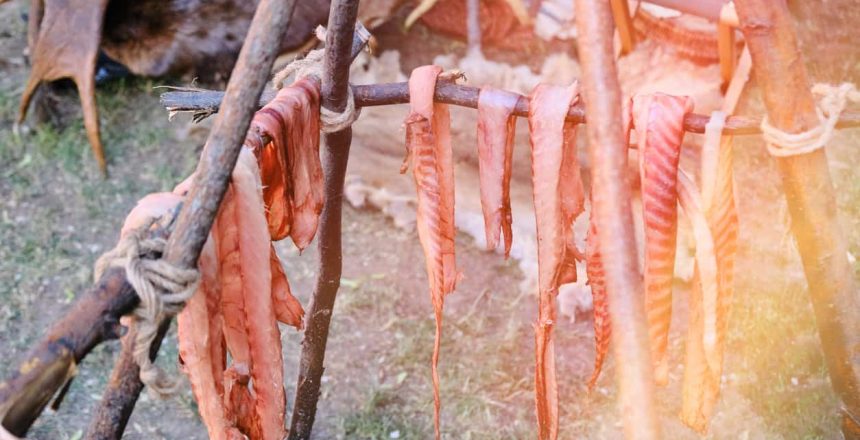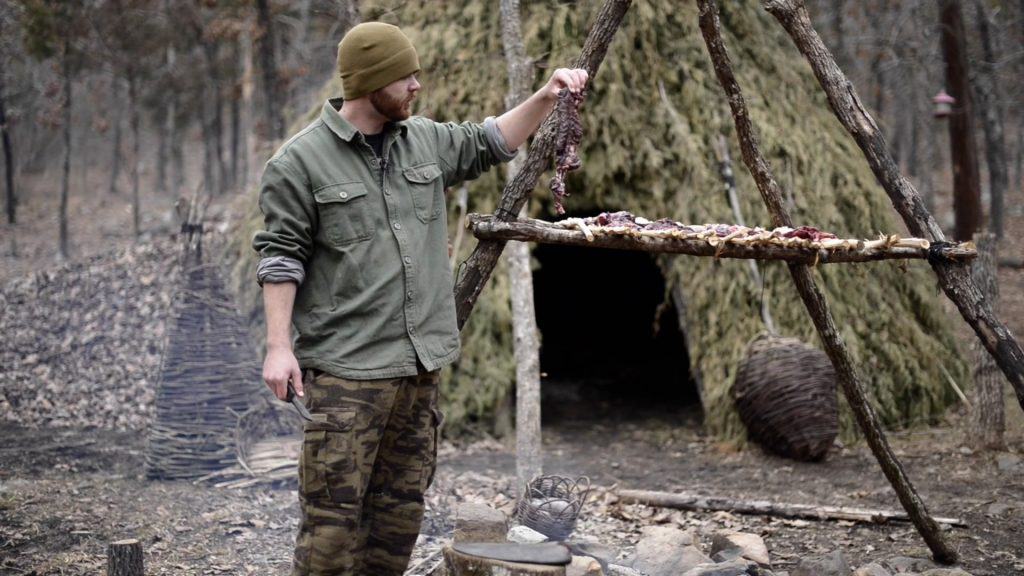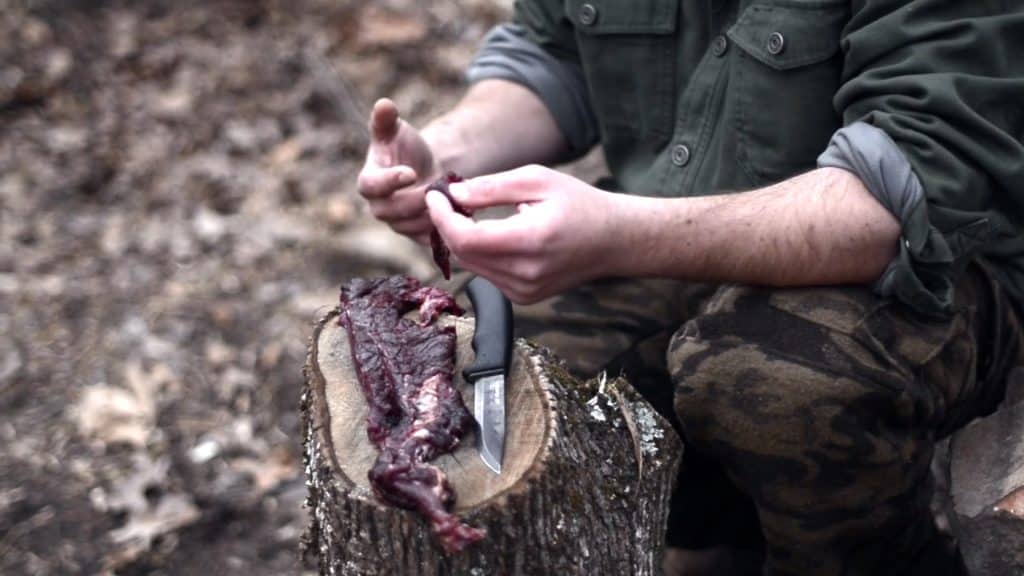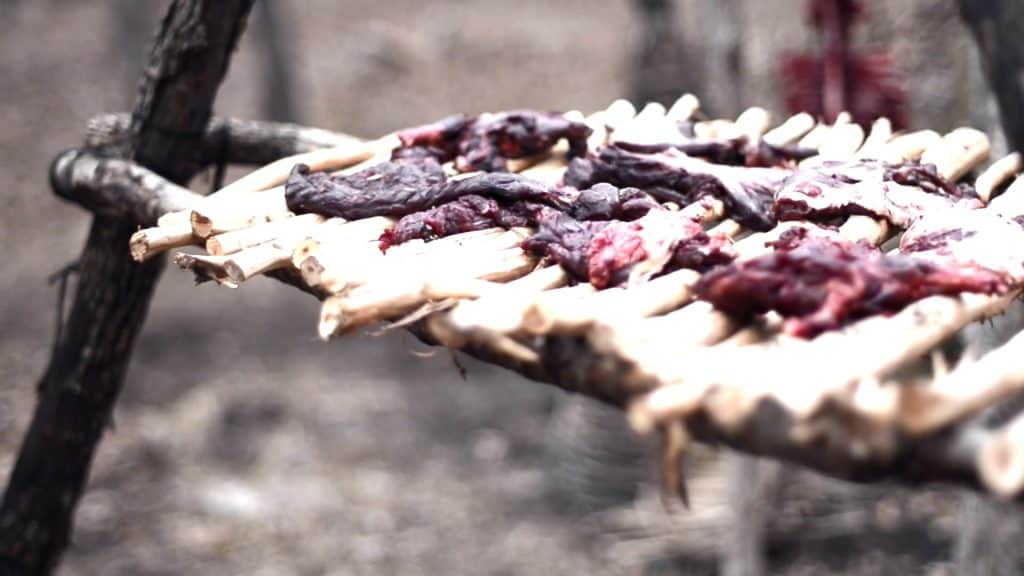Master the Art of Smoking Meat like the Native Americans
Introduction
Discover the ancient technique of smoking meat like the Native Americans in this in-depth article. This method is both a practical means of preserving food and a unique culinary experience that imparts delicious flavors. We will explore the essentials, preparation, and techniques to master this valuable wilderness skill. If you ever find yourself in a situation where you have to hunt for your own food, smoking meat will be the best way to preserve that meats for longer periods of time.
Appreciating the Native American Smoking Tradition
The Native American method of smoking meat is a testament to their resourcefulness and deep connection with the land. This technique combines low heat and smoke to cook and preserve food, ensuring that sustenance is available even during harsh conditions. This process typically requires a makeshift smoker, which can be constructed using materials found in the wilderness.
Gathering the Essentials: Tools and Materials
To begin smoking meat like the Native Americans, gather the following tools and materials:
- Sturdy sticks or poles for constructing a tripod or smoking rack
- Meat (wild game, fish, or any available protein source)
- Wood from hardwood trees (e.g., oak, hickory, or maple) for fuel and smoke
- Firestarter (matches, lighter, or flint and steel)
- Leaves or cloth for storing the smoked meat
Building a Makeshift Smoker: Tripod or Smoking Rack
In the wilderness, the Native Americans often built a makeshift smoker using either a tripod or a smoking rack. Here’s how to construct each type:
Tripod Smoker
- Find three sturdy, straight branches or poles, approximately 6-7 feet long.
- Tie the poles together at one end, forming a tripod shape.
- Hang the meat from the tripod using additional sticks or cordage.
- Build a small fire beneath the tripod, ensuring enough space for smoke to circulate the meat.
Smoking Rack
- Find four sturdy, straight branches or poles, approximately 4-5 feet long, to serve as vertical supports.
- Gather additional shorter sticks to create horizontal crossbars for the rack.
- Using cordage or notches, assemble the frame by connecting the vertical supports and horizontal crossbars.
- Place the meat on the crossbars and build a small fire beneath the rack, allowing smoke to circulate around the meat.
Preparing the Meat: Cleaning, Cutting, and Food Safety
Before smoking, properly prepare the meat by following these steps:
- Clean the meat: Thoroughly clean wild game or fish, removing dirt, debris, or scales.
- Cut the meat: Slice the meat into thin, even strips to facilitate even smoking and drying. This also helps the smoke penetrate the meat, enhancing its flavor and preservation qualities.
- Trim excess fat: Be sure to trim off as much fat as possible. You can render the fat to preserve it. Rendered fat provides an excellent source of calories.
Selecting the Right Wood: Hardwood for Flavor and Preservation
The choice of wood is crucial when smoking meat, like the Native Americans. Opt for hardwood trees, such as oak, hickory, or maple, which provide the best smoke for flavor and preservation. Avoid softwoods like pine trees or cedar, as they can produce a bitter taste and contain resins that may be harmful when ingested.
Building and Maintaining the Fire: Heat and Smoke Control
The key to smoking meat like the Native Americans is to use a low, smoldering fire. Follow these steps to build and maintain the fire:
- Gather hardwood for fuel, as it produces the best smoke for flavor and preservation.
- Build a small fire beneath the smoker, maintaining a low heat and steady smoke flow. The fire should not directly touch the meat.
- Monitor the fire closely, adding wood as needed to maintain a consistent temperature and smoke level. The ideal temperature for smoking meat is between 150°F and 225°F. You can estimate the temperature by holding your hand near the meat and gauging how long you can keep it there comfortably. The temperature is approximately right if you can hold your hand near the meat for 8-10 seconds.
- Keep the fire burning for several hours, depending on the thickness of the meat and desired level of smokiness. Thinner cuts may take as little as 4-6 hours, while thicker cuts can take up to 12 hours or more.
Storing the Smoked Meat: Preservation and Storage Techniques
Once the meat has been smoked to your satisfaction, it’s essential to store it properly to ensure longevity and maintain quality. Follow these steps for storing smoked meat:
- Allow the meat to cool completely. This can be done by removing it from the smoker and placing it in a well-ventilated, shaded area.
- Wrap the cooled meat in leaves or cloth to protect it from insects and dirt. This natural wrapping also helps to preserve the smoky flavor.
- Store the wrapped meat in a cool, dry place, such as a shaded area, a makeshift container, or a ventilated pouch. Properly smoked meat can last several weeks without refrigeration, making it an invaluable resource in the wilderness. If you have the equipment, vacuum sealing your meat will last a very long time.
Creative Culinary Ideas: Enjoying Your Smoked Meat
Smoked meat serves as a preserved food source and offers a delicious, savory treat. The rich, smoky flavor adds depth to any meal, making it a prized delicacy in the wild.
Here are some ideas for enjoying your smoked meat:
- Eat the smoked meat as is for a satisfying and protein-rich snack.
- Incorporate the smoked meat into various dishes, such as stews, soups, or stir-fries.
- Use the smoked meat as a base for wilderness charcuterie boards, pairing it with fruits, nuts, and other foraged edibles.
- Combine the smoked meat with wild grains or vegetables to create filling and nutritious meals.
Honoring the Native American Tradition: Respect and Appreciation
When practicing the Native American method of smoking meat, it’s essential to remember the rich cultural heritage behind this timeless technique. By understanding and appreciating the wisdom of the Native Americans, we can foster a deeper connection to the land and its resources. Always practice responsible and sustainable methods when sourcing and preparing food in the wilderness. Embrace this time-honored tradition and embark on a journey that connects you to the wisdom and resourcefulness of the Native Americans.
Conclusion
Learning how to smoke meat like the Native Americans did is a valuable skill for wilderness survival and a unique culinary experience. This article provides you with the knowledge and techniques necessary to preserve and enjoy delicious, flavorful meat in the great outdoors. From building a makeshift smoker to mastering the smoking process, you can now confidently undertake this ancient practice that connects you to the wisdom and resourcefulness of the Native Americans.






